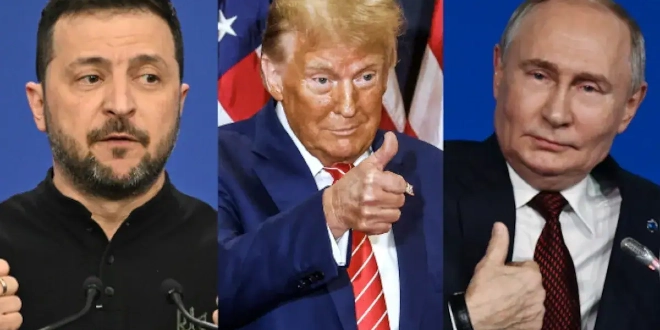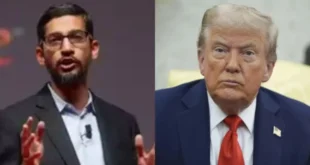The Irish government is now facing a pressing question—how much of the unexpected Apple tax windfall should be allocated to national defense? This debate has gained urgency due to the shifting global security landscape, particularly in the wake of the war in Ukraine and the radically different approach to international affairs under the new U.S. administration led by President Donald Trump.
With an unexpected €16 billion boost to the public purse, the government is now in a position to make critical decisions about military investment. The choices range from allocating none of the funds to defense, to committing half, or even the full amount. However, even a substantial investment in defense would primarily cover necessary equipment such as radar systems, air and missile defense, naval detection technology, and basic armament—without even factoring in the significant long-term costs associated with personnel, maintenance, and eventual replacement of assets.
Beyond military hardware, the country also faces a broader challenge: how to make Ireland more resilient against modern threats, including cyberattacks, hybrid warfare, and psychological operations. With national security now a growing concern, the question arises—where will the money for such measures come from?
Security and Spending in an Uncertain Global Climate
The debate has intensified following statements from the Trump administration outlining major policy shifts on trade, taxation, industrial strategy, and defense. Trump has also unveiled an initiative aimed at bringing the war in Ukraine to an end, an approach that has been met with deep unease in European capitals.
The proposed U.S. peace plan suggests constructing a physical division across Ukraine, effectively partitioning the country, with the expectation that Europe will bear the financial burden. This has forced European governments to confront long-avoided questions about defense spending and energy security—two key economic factors that have been destabilized by recent crises, including the war in Ukraine, the 2008 financial meltdown, and the ongoing struggle to mobilize European capital for investment within the continent.
The recent direct communication between Trump and Russian President Vladimir Putin has accelerated these discussions across Europe. The U.S. administration now expects European nations to commit more funding to defense, a demand that Trump has long emphasized.
Trump’s Demand for Higher European Defense Spending
The push for greater European military investment gained traction following Russia’s annexation of Crimea in 2014, leading NATO member states to set a defense spending target of 2% of GDP. Trump has repeatedly claimed credit for increased European military budgets, arguing that his pressure tactics forced reluctant governments to act.
With his return to office, Trump is determined to ensure that European defense spending remains elevated. Moreover, he expects European nations to direct much of this increased budget toward American-made military technology.
One of Trump’s more controversial proposals is for European troops and military assets to be stationed in Ukraine following a peace deal with Russia—one that, while aimed at ending hostilities, would likely involve territorial concessions from Ukraine. While the specifics of these territorial losses remain uncertain, the U.S. administration has indicated it would offer logistical support, intelligence-sharing, and weaponry to European forces involved in such an arrangement.
Additionally, Trump’s administration has floated the idea of selling Ukraine advanced weaponry but insists that Ukraine must, in return, provide the U.S. with vast quantities of raw materials, particularly rare earth minerals, as a form of compensation. This arrangement would effectively create a security partnership that financially sustains itself while securing critical resources for the U.S.
Linking Trade and Defense
Trump’s transactional approach extends beyond military agreements. His administration has signaled an aggressive stance on trade, arguing that the U.S. has been unfairly exploited by global partners. He has proposed reciprocal tariffs, claiming that other countries must “pay their own way” rather than benefit from preferential treatment.
As part of this mindset, Trump has linked trade imbalances with defense obligations. In a recent speech, he criticized Canada—one of NATO’s lowest defense spenders—suggesting that its reliance on U.S. military protection was unfair. He even implied that Canada’s trade surplus with the U.S. constituted a subsidy, fueling speculation about increased tariffs or new economic restrictions.
Given Ireland’s significant trade surplus with the U.S. in goods, Trump may take a similarly critical view of its low defense spending. Ireland currently allocates only 0.2% of GDP to defense—far below NATO’s 2% target, which has now become the de facto standard for Western nations.
The Future of Irish Defense
Unlike Switzerland or Austria, Ireland does not practice armed neutrality, nor does it participate in a defense alliance where military responsibilities can be shared with larger powers. It lacks the infrastructure to defend its own airspace, let alone protect vital assets such as the undersea data cables that are essential to its economy.
If Ireland were to increase its military spending, it would require substantial reallocation of government resources, potentially impacting other priorities such as housing, healthcare, and social welfare. However, investment in defense could also stimulate job creation, particularly in high-tech military industries, and position Ireland to benefit from research funding tied to European and transatlantic security initiatives.
The European Sky Shield Initiative
One major defense project currently under development in Europe is the European Sky Shield, a missile defense system akin to Israel’s Iron Dome. Initially spearheaded by Germany in 2022 following Russia’s invasion of Ukraine, the initiative has seen widespread participation across the continent.
While most European nations have joined, key military powers like France, Spain, and Italy have opted out, advocating for a Europe-built alternative rather than reliance on U.S. technology. Meanwhile, neutral countries like Switzerland and Austria have signed up, recognizing the need for enhanced security cooperation. Ireland, however, has yet to commit to either approach.
If Ireland were to join the German-led Sky Shield initiative, it would represent a relatively straightforward way to bolster its defense capabilities. Bulk purchases of military hardware could provide cost efficiencies, as demonstrated during the COVID-19 vaccine rollout. However, such a decision would still represent a major financial and political commitment.
Strategic Challenges and U.S. Tax Policy
Beyond defense spending, Ireland faces another looming challenge: changes to U.S. tax policy under Trump. A recent article in the Wall Street Journal highlighted concerns over Ireland’s reliance on corporate tax revenue from multinational tech firms. Trump’s administration is reportedly considering an “External Revenue Service” aimed at recovering U.S. corporate taxes paid abroad—potentially siphoning billions from Ireland’s coffers.
This presents a major risk to Ireland’s economic model. A recent assessment by the Central Bank of Ireland warned that a shift in U.S. tax and tariff policies could erode the profitability of American multinationals operating in Ireland. This, in turn, could trigger a budget shortfall, reversing the current tax windfall and forcing the government to borrow to sustain existing services.
The Political Reality
As the Irish government prepares for the annual St. Patrick’s Day visit to the U.S., pressure is mounting. Washington expects European allies to contribute more to collective defense, and Ireland will not be exempt from this expectation.
With mounting external pressures from both the U.S. and the EU, Ireland may soon have to make difficult decisions regarding defense investment. The reality is that American patience is wearing thin, and the expectation for increased military spending is no longer just a polite request—it is a demand.
The key question remains: How much of Ireland’s unexpected tax windfall will be spent on defense, and how much will be left for other national priorities?
 The Daily Star Ireland
The Daily Star Ireland



